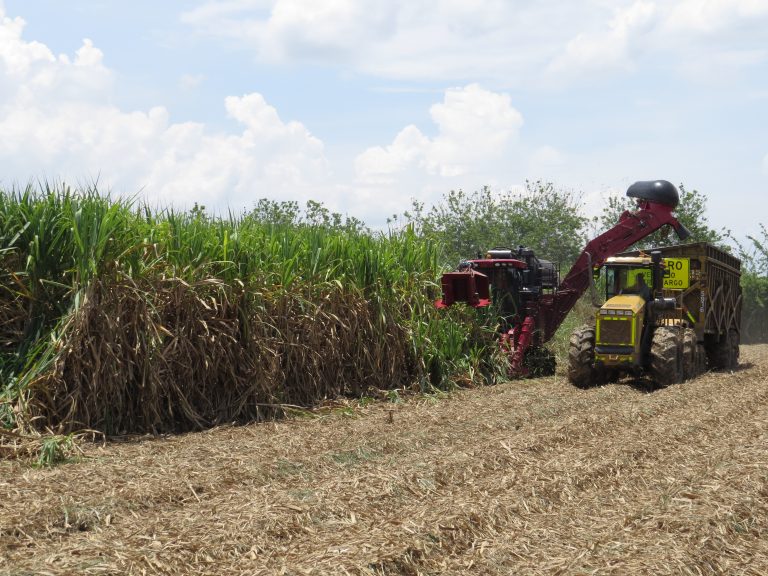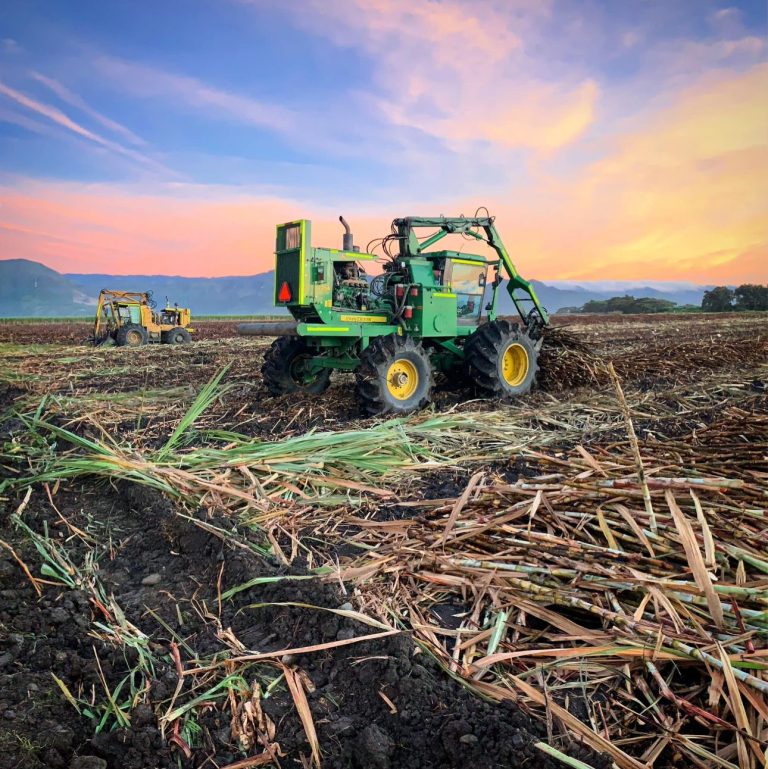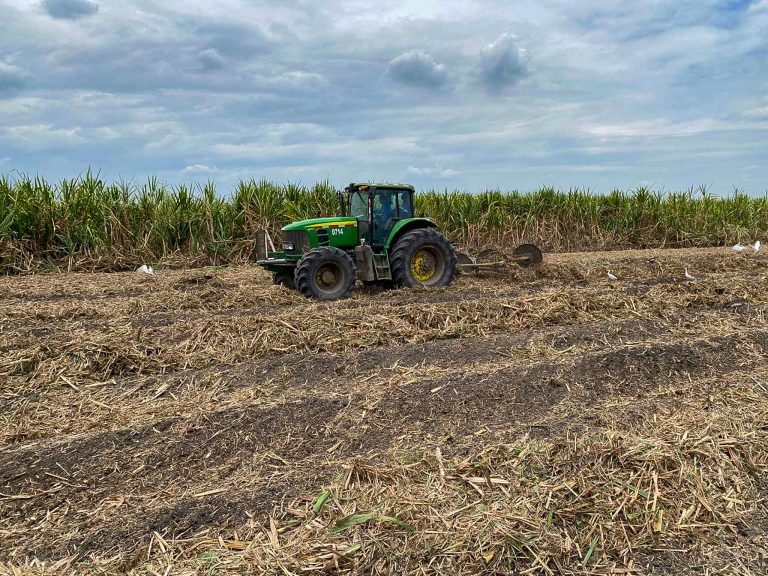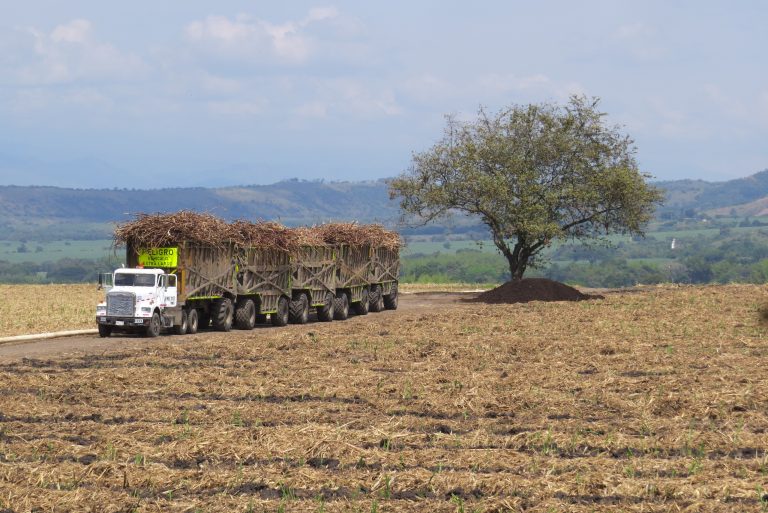At Ingenio Pichichi S.A., Harvest Management plays a fundamental role in the success of our operations, ensuring that raw materials are managed efficiently and sustainably from the field to the processing plant.
Sugarcane harvesting is carried out by two main methods: manual cutting and mechanical cutting. Each of these methods has its own advantages and is selected according to field conditions and the specific needs of the moment.
Manual cutting is carried out using machetes by skilled operators, who apply specialized techniques to ensure accurate harvesting. This method not only allows careful harvesting that minimizes sucrose waste, but also facilitates the efficient removal of unproductive leaves and stems that could compromise the quality of the final product. In addition, manual cutting allows greater flexibility in difficult terrain or in areas where weather conditions may affect the operation.

On the other hand, mechanical cutting is performed by advanced harvesters that integrate cutting, cleaning and loading processes in a single piece of equipment. These machines are designed to operate over large areas quickly, which not only improves process efficiency, but also helps reduce operating costs. The harvesters are equipped with technology that minimizes the presence of foreign matter in the harvested cane and allows cutting levels to be adjusted according to the characteristics of the crop, thus guaranteeing superior quality in the final product.
Both methods seek operational excellence, guaranteeing high quality cane and maximum sucrose content at the lowest possible cost. Each technique ensures efficiency and productivity, meeting the highest industry standards.
In the manual cutting process, the elk is an essential step that involves the collection and loading of the cut cane using mechanical forklifts for subsequent transport to the processing plant.
Mechanical lifters are used, which, although they complement manual work, optimize the lifting and loading of the cut cane. The integration of manual techniques with mechanical assistance improves the efficiency of the process and minimizes the physical effort required by the employees. Manual elevation, assisted by equipment when necessary, moves the cut cane efficiently and in ideal conditions to the processing plant, thus preserving the quality of the final product.

At Ingenio Pichichi S.A., the clearing process is fundamental to prepare the fields after the sugarcane harvest, either manually or mechanically.
Tractors equipped with specialized clearing attachments are used for fast and efficient removal of debris and brush; these machines are designed to work over large areas of land. This approach improves efficiency and reduces the time required, especially in large and difficult to access areas.
Adequate clearing of harvested fields ensures that the work of raising the canes is carried out optimally, establishing a healthy and vigorous crop and production quality. This process is fundamental in the first stage of sugarcane crop lifting.

Repique is an essential technique in the management of sugarcane harvesting, designed to selectively recover the remaining stalks after cutting, eliminating stumps and bushes located in areas that are difficult for the machines to access, using curved machetes and specialized tools. Skilled labor ensures that only the healthiest and most productive canes are retained, thus improving the sucrose content and overall quality of the raw material.
The repique is carried out by specialized brigades that complete the post-harvest cane harvest in less than 48 hours. This cane, recovered in optimal conditions, is transported to the processing plant. This approach ensures that the raw material remains fresh and of high quality, ready for efficient processing.

The transportation of sugarcane by tractor-trailers is crucial in the supply chain of raw material from the field to the processing plant. Specialized tractor-trailers are designed to minimize damage, waiting times and preserve sucrose content, ensuring that the sugarcane arrives in optimal condition for the next stage of processing.
This method of transport is flexible, allowing access to various types of terrain and ensuring that the cane arrives fresh at its destination, maximizing operational efficiency and minimizing costs.
The main objective of Ingenio Pichichí’s Field Management is to ensure the availability and quality of sugarcane, an essential raw material in our production chain, while maintaining a firm commitment to sustainability and efficiency.
Among the main responsibilities of this area are:
Adequacy and preparation: This process involves a series of activities aimed at preparing the soil for planting and ensuring optimal seed development. We use RTK (Real Time Kinematic) technology to achieve high precision in land leveling, ensuring uniform soil, impacting work efficiency.
Planting: The most appropriate crop varieties are selected for each zone in order to establish crops that meet the required quality standards. This process ensures that varieties are optimally adapted to site-specific conditions, promoting TCH and sucrose indicators.
Weed control: Controls are carried out with different technologies, such as herbicide application, with various application techniques, including High Crop, Jacto and drone systems, mechanical controls using mini tractors, in order to optimize coverage and effectiveness in weed control.
Irrigation: Implementation of various irrigation systems, such as drip, in-ground surface irrigation, sprinkler and window irrigation. Water resource management is optimized through an advanced digital platform, which allows for accurate, real-time recording of water use.
Fertilization: Application of granular and liquid fertilizers adjusted to specific needs at each stage of crop growth to maximize yield and plant health.
Quality control: Rigorous evaluations are carried out to ensure that the work is performed in accordance with established quality standards. These evaluations allow us to identify and take corrective actions in a timely and efficient manner.
Research and development: Advanced satellite tools are used to monitor the field and detect anomalies with high accuracy, allowing timely correction. In addition, we conduct research projects to evaluate and implement new practices that increase productivity and cost efficiency.